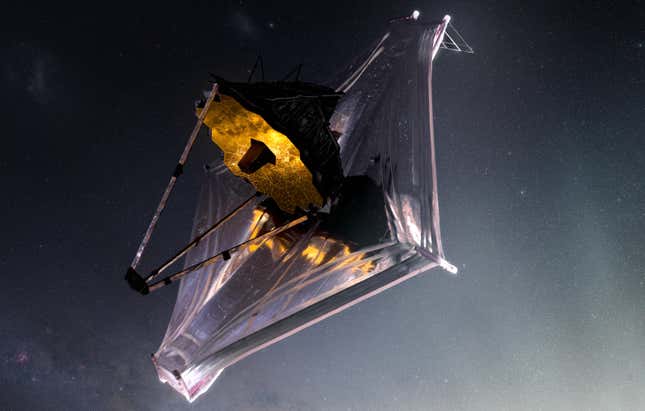
The Webb Space Telescope is in its final (seventh) stage of alignment, bringing the superlative spacecraft tantalizingly close to commencing its scientific operations.
This alignment stage involves final tweaks to the telescope’s primary mirrors and is happening right on schedule, four months after the spacecraft’s launch from French Guiana. Unlike the earlier alignment stages, each of which had a specifically outlined goal—stacking images of a specific star, for example—the seventh (and final) stage merely repeats certain checks made previously, to ensure everything is as precise as possible.
Meanwhile, the crucial Mid-Infrared Instrument (MIRI) aboard Webb has achieved its final, bone-chilling temperature, according to a NASA release published earlier this month. Since Webb will observe objects like planets, comets, asteroids, and protoplanetary discs in the mid-infrared wavelengths, it’s vital that MIRI—the coldest instrument aboard Webb—is functioning properly. That means chilling it to the point that the vibrations of the atoms inside Webb’s detectors are suppressed. Those vibrations (called “dark current”) go up by a factor of 10 for every degree the instrument temperature increases, according to NASA.
Webb’s 18 mirrors also have to be cooled. The telescope’s primary mirror segments and its secondary mirror are made of beryllium, which takes a long time to cool down.
“Since all the mirror temperatures are now below 55 kelvins, it is expected that MIRI will be sensitive enough to perform its planned science, but any additional cooling of these mirrors will only enhance its performance,” wrote Jonathan Gardner, a Webb deputy senior project scientist, in a NASA blog. “The Webb team hopes to see the mirrors cool by an additional 0.5 to 2 kelvins.”
Later in the telescope’s commissioning, the Webb team will also test how much the spacecraft heats up and cools down depending on the angle it’s at relative to the Sun. That process will help the team correct for those temperature changes during scientific observations, which are expected to begin this summer.
More: How the Webb Space Telescope Will Support the Search for Alien Life